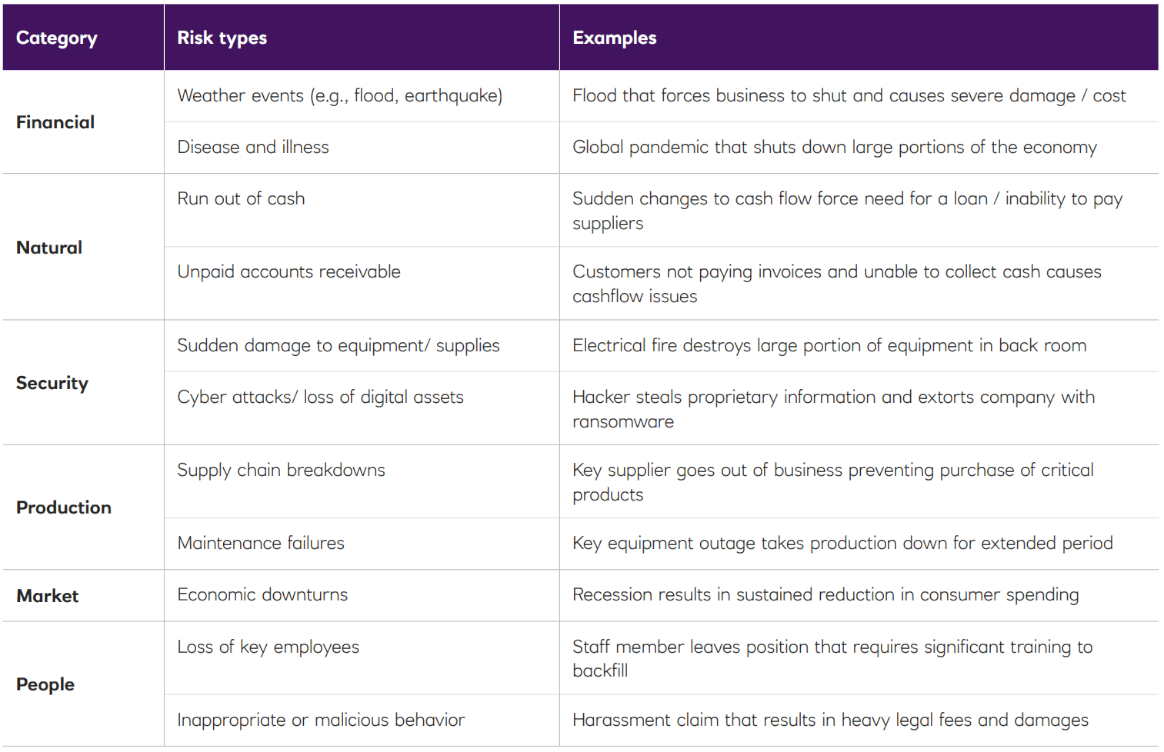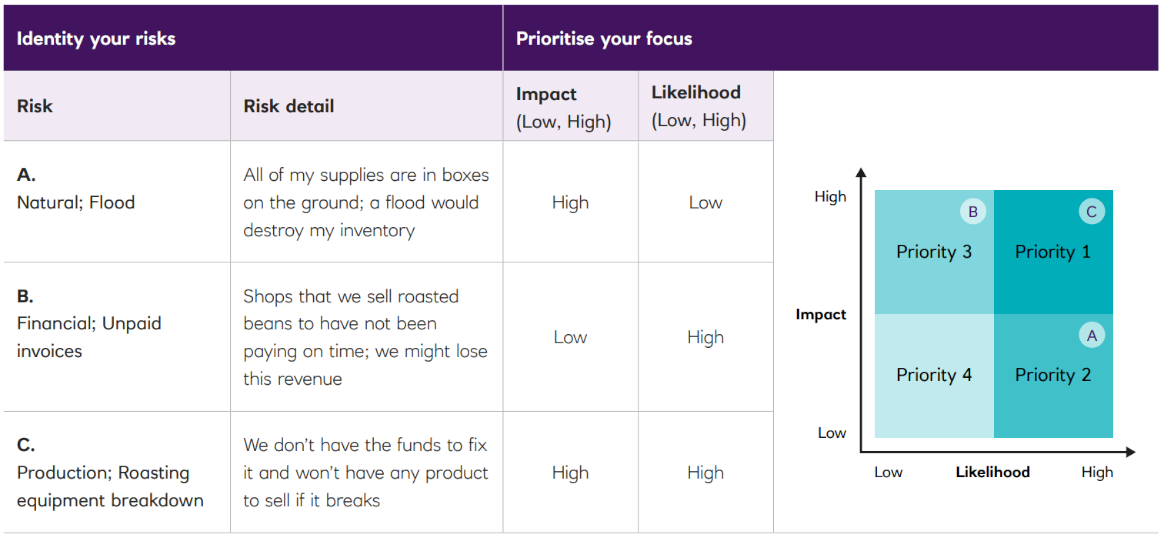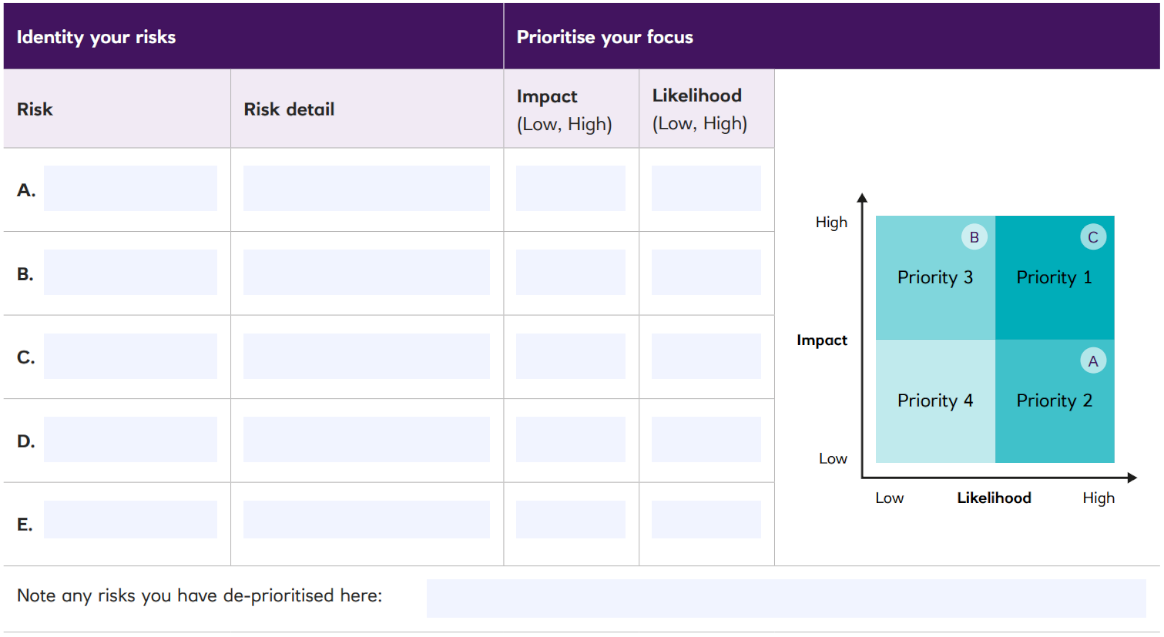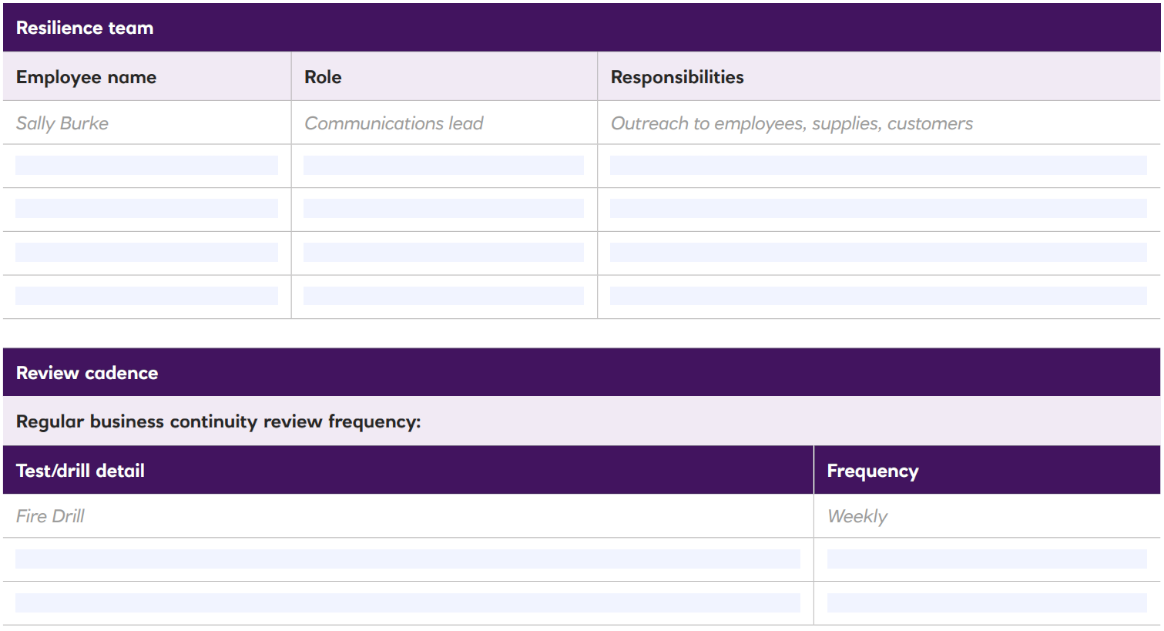Business continuity and resilience toolkit








Here’s a downloadable version of the toolkit. You can use this copy to fill out the three templates. (PDF, 311 kB)
We (NatWest Group plc) can't accept responsibility for any decisions or actions you take based on this article. It’s for information only and not meant to offer specific advice. And although we think it’s reliable, we haven’t independently checked all the information in it. You also shouldn’t copy the article anywhere without our consent. All views and forecasts in it are ours and can change.
Get business inspiration and practical tips straight to your inbox